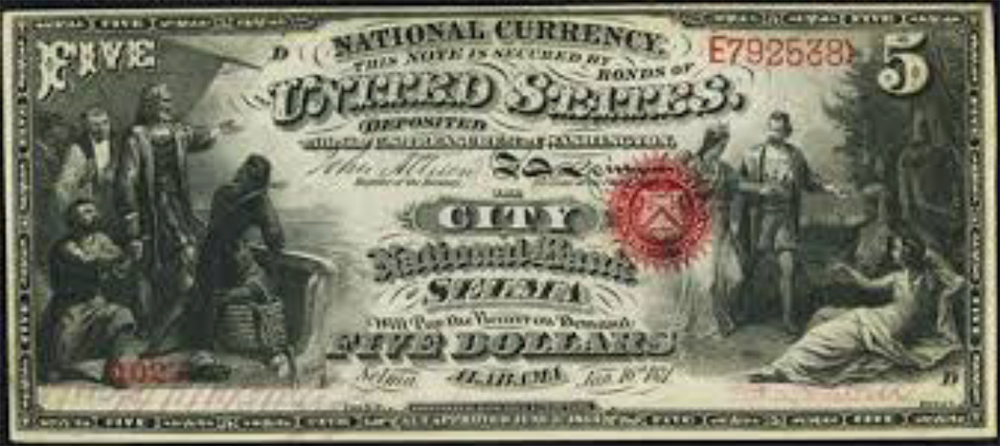Shore Collectibles
By Douglas Keefe
As I wrote last week, the use of paper money during the early 1800’s was subject to much uncertainty, with no way to easily tell If the note being used for payment of goods or services was real, or if the bank issuing the note was even still in business. Hence, the preferred means of doing business was to use gold or silver to conduct transactions.
The Civil War created a major upheaval through all aspects our society and country, not the least was its impact on our monetary system. At first, because the out-come of the war was uncertain, people hoarded coins and spent paper (when they found someone to take it), creating a major difficulty in making change. This led to the creation of fractional currency which could be used in place of coins. These notes were printed until the 1870’s and were printed in denominations of three cents through fifty cents

The most important change came about because of the need to fund the war and the total distrust of paper money. Up to the Civil War, banks received their charter through the states in which they operated, but a change came about by the government taking charge and requiring banks to obtain a federal charter to operate. In order for banks to issue currency, they would have to purchase U. S. government bonds equal to the amount of money that they were to issue, so were the bank to fail, the U.S. comptroller of the currency would sell the financial institutions’ bonds and place the proceeds in a “Redemption Fund”. The notes would retain their full legal tender status, even if the issuer failed. This insured that notes released by any bank in the system could circulate anywhere in the nation, so for the first time a traveler could expect his currency to be accepted at full value anywhere in the country, including places known as Indian Territory, since those locations were not yet states.
Instead of a hodge-podge of different designs on notes as was the case with the previous banking system, all National Bank Notes, as they were called, were uniform for each denomination, for example, all $10 notes’ design would be the same, but with the name and state of the bank along with its’ charter number printed on the bill. Each denomination had a different design, but all denominations were uniform except for the above. Banks could order whatever denomination they felt they needed, since some smaller banks would have no need for large denomination bills, but banks in larger cities, such as Philadelphia and New York would need bills such as $50 and $100. The smallest bill was a $5 and the largest $100.
In addition to the security afforded the currency, the government was able to tap the large reserves of money held in the liquid small banks through the sale of bonds to those banks. This in return help fund the war effort.
Other types of currency were created after the war, all with different backing, such as Treasury Notes and Silver and Gold Certificate which were backed by the metals.
National Currency was issued until the depression, when many banks failed. Gold Certificates were declared illegal in 1933 when President Franklin Roosevelt called for all gold coin and Gold Certificates in private hands be turned into the government and Silver Certificates could no longer be redeemed for silver after the summer of 1968. Periodically all backing of our paper money has ceased, so the backing is merely our trust in the government. Good luck with that one.
An interesting fact about our currency, unlike other countries, all currency issued by the United States government since the 1860’s, with the exception of the Gold Certificates are still legal tender at face value, although people would never spend them because their collector value far exceed the face value.
Douglas Keith is the President of Beachcomber Coins, Inc. He and his wife Linda operate Beachcomber Coins and Collectibles, formally located in the Shore Mall and now located at 6692 Black Horse Pike, Egg Harbor Township in the old Wawa building. They also have satellite offices for buying only in Brigantine (Saturday), and in Absecon (Tuesday). Between them, they have over 70 years of experience buying and selling coins, collectibles in precious metals. They are members of the American Numismatic Association, the Industry Council of Tangible Assets, the Numismatic Guarantee Corporation, the Certified Coin Exchange and the Professional Coin Grading Service. Visit their website at www.beachcombercoinsinc.com for video and information.






